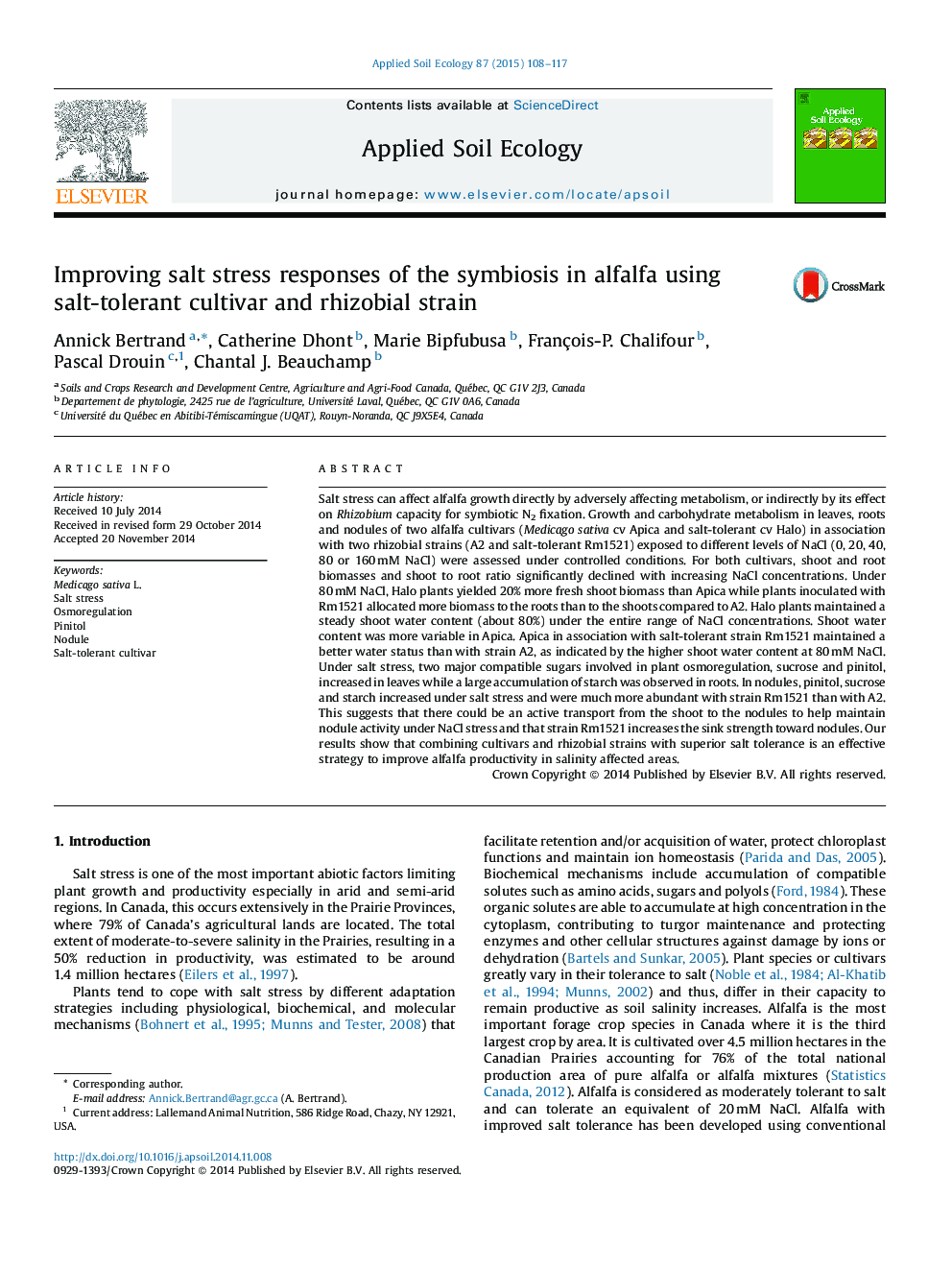| Article ID | Journal | Published Year | Pages | File Type |
|---|---|---|---|---|
| 4382057 | Applied Soil Ecology | 2015 | 10 Pages |
•Alfalfa inoculated with salt-tolerant rhizobial strain Rm1521 maintained higher water content under salt stress than with A2.•Pinitol, sucrose and starch were much more abundant in nodules inoculated with salt-tolerant strain Rm1521 than with A2.•Strain Rm1521 increases the sink strength toward nodules to maintain nodule activity under salt stress.•Combining salt-tolerant alfalfa cultivars and rhizobial strains is an effective strategy to improve alfalfa productivity under salinity.
Salt stress can affect alfalfa growth directly by adversely affecting metabolism, or indirectly by its effect on Rhizobium capacity for symbiotic N2 fixation. Growth and carbohydrate metabolism in leaves, roots and nodules of two alfalfa cultivars (Medicago sativa cv Apica and salt-tolerant cv Halo) in association with two rhizobial strains (A2 and salt-tolerant Rm1521) exposed to different levels of NaCl (0, 20, 40, 80 or 160 mM NaCl) were assessed under controlled conditions. For both cultivars, shoot and root biomasses and shoot to root ratio significantly declined with increasing NaCl concentrations. Under 80 mM NaCl, Halo plants yielded 20% more fresh shoot biomass than Apica while plants inoculated with Rm1521 allocated more biomass to the roots than to the shoots compared to A2. Halo plants maintained a steady shoot water content (about 80%) under the entire range of NaCl concentrations. Shoot water content was more variable in Apica. Apica in association with salt-tolerant strain Rm1521 maintained a better water status than with strain A2, as indicated by the higher shoot water content at 80 mM NaCl. Under salt stress, two major compatible sugars involved in plant osmoregulation, sucrose and pinitol, increased in leaves while a large accumulation of starch was observed in roots. In nodules, pinitol, sucrose and starch increased under salt stress and were much more abundant with strain Rm1521 than with A2. This suggests that there could be an active transport from the shoot to the nodules to help maintain nodule activity under NaCl stress and that strain Rm1521 increases the sink strength toward nodules. Our results show that combining cultivars and rhizobial strains with superior salt tolerance is an effective strategy to improve alfalfa productivity in salinity affected areas.
